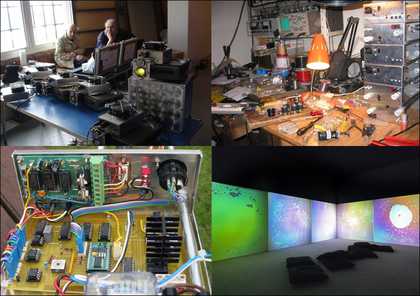The history of artists using 35 mm slide technology as an integral part of their artworks is relatively recent and as with all technology-based works these works face significant problems related to the obsolescence of the technology upon which they depend. Whilst this may have been understood, the significance of this fact was largely theoretical until recently, where artists, curators and conservators are now facing this as a stark reality. Despite the significance of the original technology to the this body of work, it is clear that in future alternative modes of display will have to be found and agreed between the artists and curators involved.
There might be artworks for which these alternatives fall short of the artist’s conception, in which case these artworks will no longer be displayable either temporarily or permanently. How to negotiate the future of these works in cases where no satisfactory alternative means of display can be found is largely unknown territory. One alternative may be to explore the representation of these artworks by documentation; a strategy not without its own challenges and complications.
There is little precedent for this situation within conservation and hence a lack of practical experience in planning for substantial shifts between technologies. There is little to guide us in how to judge the time available to lay the foundation for the necessary decisions and subsequent actions as these technologies fade. Technological obsolescence progresses in an irregular manner over many years and attempts to model this must take into consideration a combination of factors:
- the ability to duplicate 35 mm slides
- the availability of spare parts and consumables such as projector lamps and slide mounts
- the availability of equipment on the second-hand market once fabrication has stopped
- the availability of specialist knowledge to install, maintain and repair the equipment involved
- the availability of a budget to pay for these services
There is a relatively short period of time available during which old and new technologies can be compared in order to be able to make informed decisions about the best possible options for specific artworks. This window represents a time when the old technology is not yet entirely obsolete and the new one is already mature enough to provide a stable alternative. However, even if we recognise that now is the time to make these decisions, do we as a profession have a good enough understanding of 35 mm slide technology to make these judgements?
When slide technology was in vogue, conservators had only marginal dealings with these artworks as artists often directly oversaw the production of slide duplicates for the display of their works. While it may have been recognised that this situation was not ideal, conservators often did not have enough works in their care to have the opportunity to develop the expertise needed to be able to judge the quality of slide duplicates. Furthermore, access to the in-camera master is not usually available to the conservator for direct comparison between this and duplicate copies.


